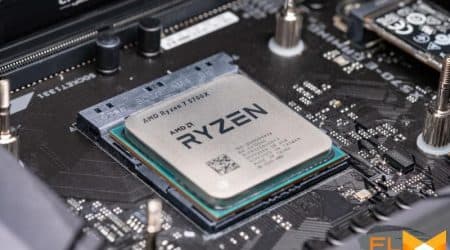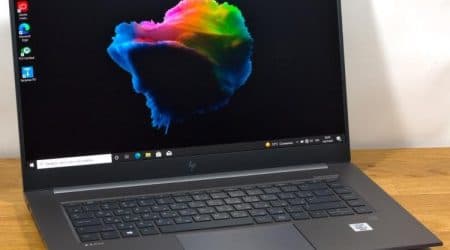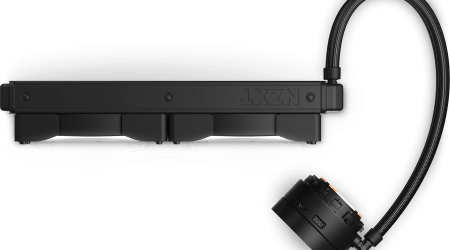In today’s fast-paced world, the ability to connect wirelessly to your favorite audio devices has become essential. Whether you’re commuting, exercising, or simply enjoying some downtime at home, having seamless access to high-quality sound can greatly enhance your experience. Understanding how to effectively link these technological wonders not only optimizes their functionality but also enriches your daily life.
The process may seem daunting at first, especially with the multitude of options available that promise a superior auditory experience. Factors such as compatibility, comfort, and audio quality play pivotal roles in making the right choice. By exploring the nuances of establishing connections, individuals can unlock the full potential of their devices.
As you embark on this journey, you’ll discover various methods and tips that ensure a smooth transition into the world of wireless audio. From experiencing your favorite tunes to enjoying crisp calls, the right approach to connecting these devices can lead to unmatched satisfaction and convenience.
Understanding Bluetooth Connectivity Basics
In the realm of wireless audio technology, grasping the foundational concepts of connectivity is essential for achieving an optimal listening experience. This section will delve into the principles behind establishing a seamless link between devices, enabling users to enjoy their favorite tunes without the hassle of tangled wires.
At its core, the connection relies on the transmission of data over short distances, utilizing radio waves to facilitate communication between compatible gadgets. The process involves several key components, including profiles, frequencies, and pairing mechanisms that work in tandem to ensure effective audio streaming.
| Term | Description |
|---|---|
| Frequency | The specific radio wave range, typically 2.4 GHz, used for transmission between devices. |
| Profiles | Standards defining how devices communicate, affecting features like audio quality and playback control. |
| Pairing | The initial setup process that establishes a secure connection between two devices. |
Understanding these elements is crucial for maximizing the performance of your audio devices and troubleshooting any potential connectivity issues. Embracing this knowledge will empower users to explore the full potential of their wireless audio experiences.
Choosing the Right Headphones for You
Selecting the perfect audio device can significantly enhance your listening experience. With various options available on the market, understanding your needs and preferences is crucial in making the right choice. From sound quality to comfort, several factors come into play when deciding which model suits you best.
Factors to Consider
- Sound Quality: Look for devices that provide clear and balanced audio. Consider models with noise cancellation features for an immersive experience.
- Comfort: Choose a design that fits well and feels comfortable during long listening sessions. The materials used can make a difference.
- Battery Life: If you plan to use your device for extended periods, opt for models with long-lasting battery capacity.
- Portability: Consider whether you need lightweight options or foldable designs that can be easily transported.
- Price Range: Determine your budget ahead of time. Products come in various price categories, so it’s essential to find one that offers the best value for your investment.
Types to Explore
- Over-Ear: Ideal for sound isolation, these devices provide a comfortable fit around the ears.
- On-Ear: Compact and lightweight, suitable for casual listening without compromising audio quality.
- In-Ear: Highly portable and often preferred for active lifestyles, offering a snug fit that can block external noise.
By evaluating these factors and types, you can narrow down your options and find the audio accessory that aligns perfectly with your lifestyle and preferences.
Compatibility with Various Devices
When considering wireless audio accessories, ensuring their ability to connect seamlessly with multiple gadgets is essential. The diverse landscape of electronic devices necessitates an understanding of how these wireless technologies can interact with one another, providing a smooth user experience across different platforms.
Modern audio devices often support a wide range of operating systems, including iOS, Android, Windows, and macOS. This compatibility allows users to enjoy music, podcasts, or calls effortlessly on smartphones, tablets, and computers alike. However, it is vital to verify specific features that may differ, such as codec support, which can impact sound quality and connection stability.
In addition to smartphones and computers, many audio accessories can connect to smart TVs, gaming consoles, and wearable technology, thereby expanding their versatility. Understanding these connections helps consumers to maximize their investment and select devices that work well within their existing ecosystem.
When exploring options for wireless sound solutions, always check the specifications for compatibility. This consideration enables a hassle-free experience and ensures that users can take full advantage of the features offered by their chosen devices.
Top Features to Look For
When selecting wireless listening devices, it’s essential to consider various characteristics that enhance the overall experience. These elements can significantly impact sound quality, comfort, battery life, and additional functionalities that cater to individual preferences. Understanding these features allows users to make informed decisions tailored to their needs.
Audio Quality
One of the primary aspects to evaluate is the audio performance. Look for devices that offer high-fidelity sound with a balanced mix of bass, mids, and treble. Additionally, support for advanced audio codecs can further enhance the listening experience, providing clearer sound and reducing latency.
Comfort and Fit
The design and comfort level of the product are crucial for extended usage. Ergonomically engineered models ensure a snug fit without causing discomfort. Consider models with adjustable components or customizable tips to find the perfect match for prolonged enjoyment.
Troubleshooting Common Pairing Issues
When trying to connect wireless audio devices, users can encounter various obstacles that may hinder the process. Understanding these common difficulties and their solutions can enhance your overall experience and ensure seamless operation.
One frequent issue is the inability to detect the device. This can often be resolved by ensuring that the audio unit is in discovery mode. Check the manufacturer’s instructions for the specific method to activate this feature. Additionally, make certain that your smartphone or computer has Bluetooth functionality turned on.
Interference from other wireless devices can also disrupt the connection. To mitigate this, try to minimize the number of active wireless gadgets in the vicinity. If possible, position your audio device closer to your source to strengthen the signal.
Often, previously connected devices may cause confusion when attempting to establish new connections. To rectify this, disconnect or forget any old connections in your device’s Bluetooth settings. Restarting both items can also refresh the connection process.
Sometimes, software updates for either the audio unit or the source device may be necessary. Check for any available updates that could resolve glitches and improve compatibility. Regularly updating your devices can prevent many issues before they arise.
Lastly, consult the user manuals or support sites for further guidance if persistent problems occur. Each model may have unique quirks that require specific solutions, making it worthwhile to refer to official resources.
Enhancing Sound Quality and Performance
Achieving optimal audio experience involves a blend of technology, environment, and personal preferences. By understanding the nuances of sound reproduction, listeners can significantly elevate their auditory encounters.
1. Optimal Fit and Seal: The physical structure of the devices plays a critical role in sound fidelity. Ensuring a snug fit enhances sound isolation, allowing users to immerse themselves in music without external distractions. Experimenting with different tips or cushions can lead to improved acoustics.
2. Quality of Source: The playback device considerably influences sound output. Utilizing high-resolution files or lossless formats can help preserve the intricacies of the original recording. Moreover, enabling high-quality streaming services can further enhance audio clarity.
3. EQ Adjustments: Many players and applications offer equalization options. Tailoring these settings to personal taste can result in a more satisfying listening experience. Whether aiming for boosted bass or clearer treble, fine-tuning the audio spectrum is key.
4. Wireless Interference: External factors can affect performance. Minimizing obstacles between the devices and the playback source, as well as avoiding crowded wireless environments, can significantly reduce dropouts and enhance the listening experience.
5. Regular Maintenance: Keeping the equipment clean and in good condition ensures longevity and performance. Regularly inspecting and cleaning drivers or components can prevent sound distortion and maintain superior quality over time.
Ultimately, a combination of these factors can lead to an enriched auditory experience, allowing users to fully enjoy their favorite sounds in a way that resonates personally with them.
Q&A: How to pair bluetooth headphones and earphones
How do you connect Bluetooth wireless headphones or earbuds to an iPhone, and what steps should you follow for successful pairing?
To connect Bluetooth wireless headphones or earbuds to an iPhone, first make sure your headphones are charged and in pairing mode. To enter pairing mode, press and hold the power button or the Bluetooth button on the headset until the LED light starts blinking red and blue, indicating that the device is ready to pair. On your iPhone, open Settings and turn on Bluetooth by tapping the Bluetooth icon. Your iPhone will search for available devices; when you see the name of your headphones on the list, tap on it to connect. If prompted, confirm the pairing request. Once connected, you’ll see your headphones listed as connected, and you can start listening to music or other audio.
What should you do if your Bluetooth wireless earbuds are not connecting to your device, and how can you troubleshoot the pairing process?
If your Bluetooth wireless earbuds are not connecting, start by making sure Bluetooth is turned on your device. Open the device’s Bluetooth menu and ensure the earbuds are charged and in pairing mode. Press and hold the pairing button on your earbuds until the LED light blinks, indicating they are ready to pair. If your earbuds still don’t appear in the list of available devices, try turning off Bluetooth and then turning it back on. You can also reset your earbuds by placing them back in the charging case for a few seconds and then trying to pair again. Check the instructions that came with your earbuds for any model-specific steps, as some earbuds may have unique pairing procedures. If problems persist, consider restarting your device and repeating the pairing process to ensure a successful connection.
How can you connect your Bluetooth headphones to a Windows 10 or Windows 11 PC, and what steps are involved in the initial pairing?
To connect your Bluetooth headphones to a Windows 10 or Windows 11 PC, start by turning on your headphones and putting them in pairing mode. Typically, this involves pressing and holding the Bluetooth button or power button on the headphones until the LED light blinks, indicating they are ready to pair. On your PC, go to the Bluetooth settings by clicking on the Start menu, selecting Settings, then Devices, and choosing Bluetooth & other devices. Enable Bluetooth by toggling the switch, and select “Add Bluetooth or other device” at the top of the screen. Choose Bluetooth from the list of options, and your PC will search for available devices. Find your headphones in the list and click on them to connect. Once paired, the headphones will show as connected, allowing you to listen to audio wirelessly.
What steps should you follow to connect Bluetooth earbuds to your Android phone, and how can you ensure they reconnect automatically?
To connect Bluetooth earbuds to your Android phone, first ensure that your earbuds are in pairing mode by pressing and holding the Bluetooth button until the indicator light flashes. On your Android phone, open the Settings app and tap on Connections or Bluetooth to access the Bluetooth menu. Enable Bluetooth and wait for the phone to search for available devices. When you see your earbuds’ name on the list, select your Bluetooth earbuds, and tap “Pair” to complete the connection. To ensure your earbuds reconnect automatically in the future, make sure the option to connect automatically is enabled in your device’s Bluetooth settings. Once paired, the earbuds should connect each time you turn them on, provided Bluetooth is enabled on your phone.
How do you pair AirPods with an iOS device, and what should you do if they are not connecting as expected?
To pair your AirPods with an iOS device, make sure Bluetooth is enabled by opening the Control Center and tapping the Bluetooth icon. With your AirPods in the charging case, open the lid and press and hold the setup button on the back of the case until the LED light flashes white. Your iOS device should display a pop-up with the AirPods’ name at the bottom of the screen. Tap “Connect” to pair your AirPods with your device. If the AirPods are not connecting, try resetting them by holding the setup button until the LED blinks amber and then white again. Restart your iOS device and repeat the pairing process to ensure a successful connection.
What are the steps to pair Bluetooth wireless headphones with another device, and how can you switch connections between multiple devices?
To pair Bluetooth wireless headphones with another device, start by ensuring the headphones are in pairing mode, typically by pressing and holding the Bluetooth button until the light blinks. On the new device, enable Bluetooth in the settings menu, and wait for your headphones to appear in the list of available devices. Select your Bluetooth headphones and tap “Pair” to connect. If your headphones are already connected to one device and you want to switch, disconnect them from the first device before pairing with the second. Some pro wireless headphones support multiple device connections and will automatically reconnect to the last paired device. Check your headphones’ manual to confirm if multi-device pairing is supported, and use the device’s Bluetooth menu to select and connect your headphones as needed.
How can you pair your Bluetooth earbud or wireless headphones to your Android phone, and what steps should you follow for a smooth connection?
To pair your Bluetooth earbud or wireless headphones to your Android phone, start by turning on the Bluetooth pairing mode on your headphones. This is usually done by pressing and holding the Bluetooth button until the indicator light flashes, showing that the device is ready to connect. On your Android phone, go to Settings and tap on Bluetooth. Make sure Bluetooth is enabled, and wait for your phone to search for available devices. Once you see the device name of your headphones in the list of devices, select it and tap “Pair” to establish the connection. After pairing, your headphones should automatically connect when turned on and in range. If they don’t, navigate back to the Bluetooth menu and manually select your headphones from the list to reconnect.
What should you do if your true wireless earbuds are not connecting to your phone, and how can you troubleshoot common Bluetooth pairing issues?
If your true wireless earbuds are not connecting to your phone, start by ensuring that Bluetooth is enabled on your device and that your earbuds are in pairing mode. If you don’t see the earbuds in the list of available devices, try resetting them by placing them back into their charging case for a few seconds before taking them out again. Make sure to check that the earbuds are fully charged and that there are no other devices interfering with the Bluetooth connection. On your phone, go to the Bluetooth settings and tap “Pair new device” to refresh the list of devices at the bottom of the screen. If your earbuds still don’t appear, consider restarting your phone or forgetting the device and pairing them again. Following these steps can resolve most common Bluetooth pairing issues and get your earbuds connected smoothly.





